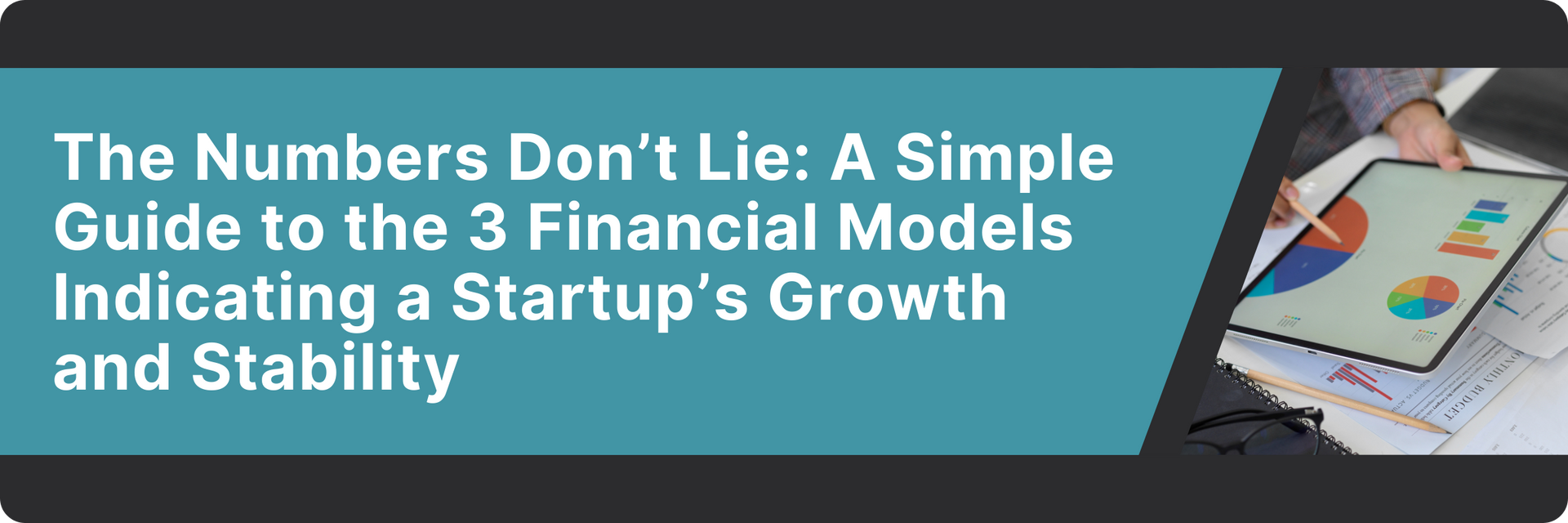
While there are many financial tools that can indicate a startup’s growth and stability, too much data spread across multiple platforms can be overwhelming to navigate and lead to murky decision making. All too often, investors use one set of tools, and founders use another to gauge stability and potential. Another common scenario is that investors and founders are using financial tools but missing the big picture, better illustrated by strategic models.
Just three models best indicate a startup’s growth trajectory and current stability. Here, we unpack and elevate the three models that matter most:
1. The Financial Model.
This single workbook connects the actual financials: all three financial statements, the budget, and the forecast.
The budget is the plan for the next 12 months. Investors and founders have decided on the budget, it is approved and then it is frozen. This allows all parties to circle back and assess budget versus actuals after a particular period to better prepare for the next period.
By the time companies get halfway through the year – whether for internal, exogenous or macroeconomic reasons – business finances vary from the original budget. The forecast makes up for this, allowing all parties to adjust numbers and stabilize the company as needed in real time. The forecast is updated as time goes by, with the investor and founder working together with the finance team to update projections. The forecast may or may not equal the budget.
One succinct financial model, with financial statements, budget and forecast in one place and all the right eyes on everything, empowers the collective team to make great financial decisions now and for up to three years in the future.
2. The Revenue Model.
This model is the most difficult to build, the most custom and the most important to have on hand. It definitively answers the question, “How is the business making money?” The revenue model clearly shows what the company is selling, what is variable recurring revenue and what is flat recurring revenue, the customer acquisition plan needed to hit revenue benchmarks, where price increases might support mutual success for the customers and company and where new offering rollouts may be needed. In short, it shows the complete picture of all revenue sources.
This looks entirely different for different business models, like consumer-packaged goods (CPG) companies or software as a service (SAAS) companies. They can also look quite different based upon where a company is in its lifecycle. As one example variable, an earlier stage company might have less recurring revenue than a later stage one. While nearly every company can get more revenue out of the existing client base, one company may have more opportunity for upsells and recurring revenue from existing customers, whereas another may be more reliant on acquiring net new customers.
Seasonality matters, too. The revenue model may show most of the revenue recognized in a particular set of months while other times are leaner. The model shows the predictable revenue growth rate so the investor and founder alike can make proactive choices about maintaining stability while hitting the right growth rate, whether conservative or aggressive for a given period.
3. The Business Model.
This model completes the logic. When coupled with the financial model and the revenue model, the business model delineates what is being sold and how it is being sold. Over time, is the business model to increase customers? Increase revenue per customer? Increase recurring revenue?
The number one misstep CPG companies make with this model is not accurately building the inventory models. They neglect to look at the number of distribution points or add distribution expansion plans into the equation, for example. For ecommerce companies, one common mistake is not looking at expanding into multiple channels or diversifying into multiple product offerings. Service-based companies must remember not only to set out realistic client acquisition plans but also factor in how to keep employee turnover low. For SAAS companies, a flat-rate business model with a strong customer acquisition plan plus low churn rate is ideal.
To pivot from early growth to long-term scaling and exit, companies must use the right financial models rather than just the basic tools.
Newsletter Signup
Thanks for joining!
Please try again later.
Join the Mindful Growth Movement!
Sign up for our Insights Newsletter – Strategies, Tips & More!
TAKES JUST 3 MINUTES!


© 2023 AVL Growth Partners | Site By

